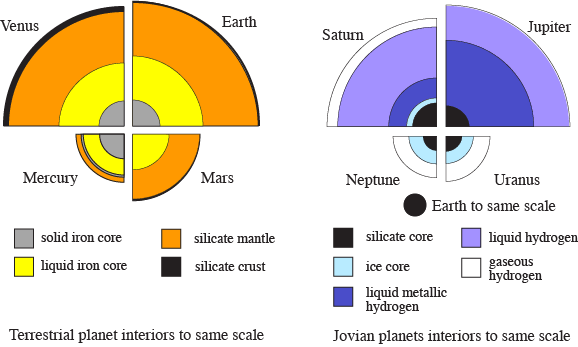Whether life could have ever existed on Mercury isn’t the point IMHO, the real question in my mind is whether life could exist on planet Mercury in the future.
It’s an interesting point as to whether life could survive under the polar ice.
> We would normally expect ice expose to spaaaced to sublime off unless kept to extremely cold temperatures, but the Messenger spacecraft found some craters with ice that appeared to have a film of carbon compounds that could “seal” the ice against sublimation even at more moderate temperatures. The widest of the iced craters looks to be about 30 km wide and 3 km deep. I can conceive of geometries that would permit pockets of water, km under the ice, to be warmed by conduction from lit portions of the surface. The ice would be sufficient to protect from cosmic radiation.
The following is a list of random thoughts, which I hope will lead somewhere.
Let’s start with the atmosphere. Mercury’s atmosphere has twice the percentage of oxygen that Earth’s does. It’s 42% oxygen as opposed to 21% oxygen on Earth. But that oxygen is atomic oxygen rather than molecular oxygen, and the density is very low. Atmospheric pressure at the planet’s surface is less than one trillionth of Earth’s.
Most of the most recent craters on Mercury’s surface are from comets – dirty snowballs. The surface of Mercury is less dense than expected, silicate rock poor in metals. Mercury does contain almost as high a proportion of metals than the Earth, but it’s all buried deep underground.
The temperature gradient heading from the surface into Mercury’s interior remains largely unknown, but is really hot. Temperatures increase with depth and the radioactivity of the core keeps the large outer metallic core molten. Here’s an interesting picture comparing the interior of Mercury with that of Venus and Earth. Mercury’s crust is 50 km thick.

Now let’s move on to the ice. For starters, why doesn’t it sublime?
From 1993. “The ices must be very clean and were thus probably deposited in a relatively short time period. … covered by a layer of dust or soil, which absorbs some of the incoming and outgoing radar energy, or both. A covering layer would also protect any ices from erosion by energetic sources.”
From 2013. “The neutron data indicate that Mercury’s radar-bright polar deposits contain, on average, a hydrogen-rich layer more than tens of centimeters thick beneath a surface layer 10 to 30 cm thick that is less rich in hydrogen. Combined neutron and radar data are best matched if the buried layer consists of nearly pure water ice. The upper layer contains less than 25 weight % water-equivalent hydrogen. A maximum ice-layer thickness of tens of meters as estimated from models of radar scattering and an estimate of the area of permanent shadow in the north polar region of (1.25 to 1.46) × 10^4 km^2. The south pole may be similar.
Sublimation rate of ice directly exposed to vacuum. In micrograms per square cm per hour. Temperature in Kelvin
Temperature Rate
150 1
100 0.1
70 0.01
Mercury’s poles can stay as low as 90 Kelvin. That converts to a sublimation rate of 0.06*10^-6 cm/hr. Which is 0.005 mm/yr. 5 mm per thousand years. 5 metres per million years. That’s not too bad.
Greater depth means higher pressure, which reduces the sublimation rate.
90 Kelvin is not a temperature conducive to the sustenance of life. But, as DV pointed out, deeper is warmer.
What about carbon?
From 2015, “Carbon may serve as the dominant darkening agent on Mercury’s surface. The measured C content for Mercury’s surface, 1.47+-0.9 wt%, is still consistent with no C at the three-standard-deviation level”
How does this compare with the Moon and Mars?
The Moon’s surface is “more than 50 parts per million” carbon.
Mars is said to have less surface carbon than the Moon.
So it looks like, when it comes to carbon, the planet Mercury may have of the order of 300 times as much as on the Moon or Mars, if not more.
